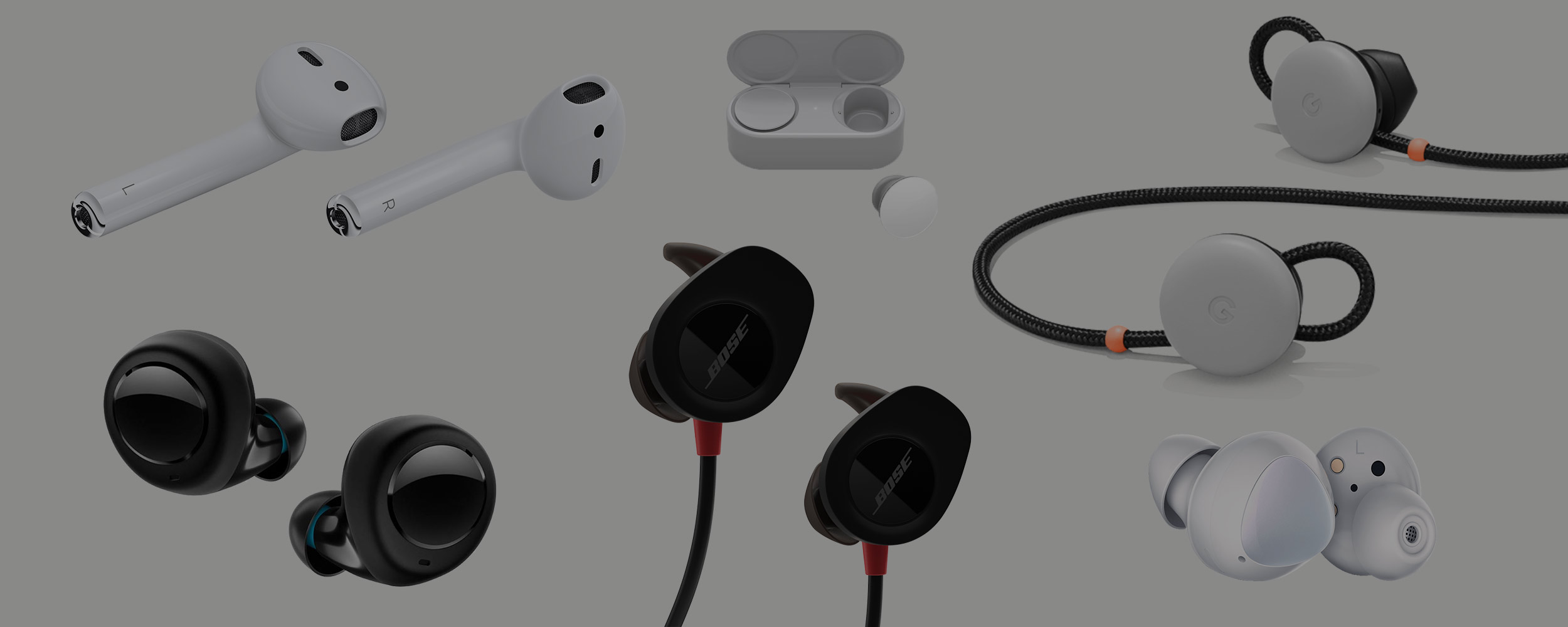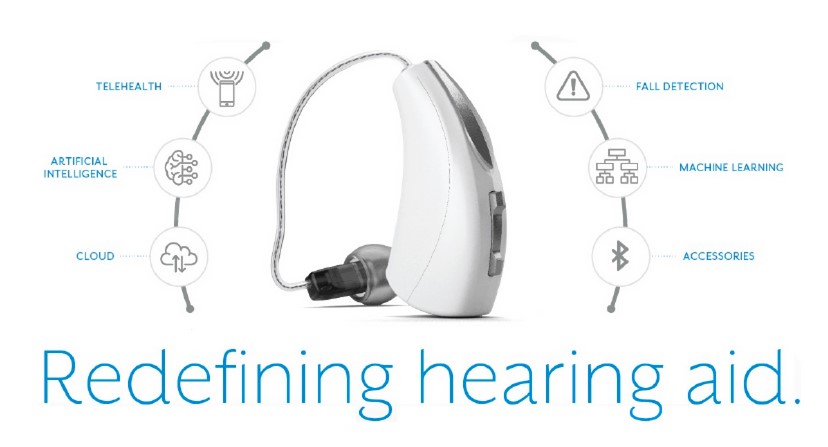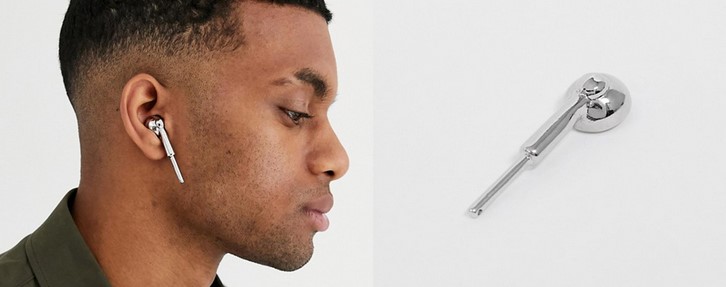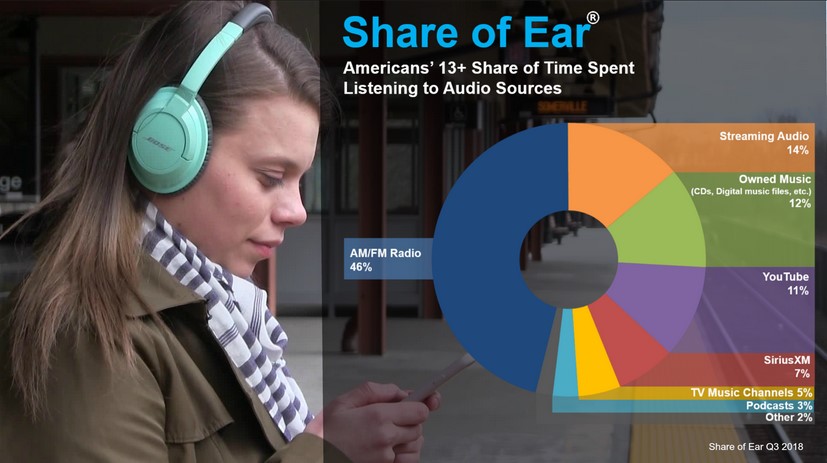Blog Post
Hearables: Wearables For Your Ears
Hearables: Wearables For Your Ears
Posted on
09 Oct 2019
Category
Sound Technology
09 Oct 2019 • Sound Technology

What are hearables?
 Hint: You may be wearing a pair right now 🎧Simply put, hearables are wearables for your ears. With advanced sensors such as gyroscopes, accelerometers, and even biometrics, these are much more than your average pair of headphones. Truly wireless earbuds take the feature sets of smartwatches from your wrists and move them to your head, making fitness tracking and health monitoring possible while you listen to music. Additionally, with so many functionalities available at your beck and call (becoming a reality with more and more compatible virtual assistants), there’s less of a reason to ever take your smart headphones out—except, of course, to recharge the batteries. This increase in usage in tandem with digital audio consumption being higher than ever, could mean that the sonic branding landscape will expand dramatically.
Hint: You may be wearing a pair right now 🎧Simply put, hearables are wearables for your ears. With advanced sensors such as gyroscopes, accelerometers, and even biometrics, these are much more than your average pair of headphones. Truly wireless earbuds take the feature sets of smartwatches from your wrists and move them to your head, making fitness tracking and health monitoring possible while you listen to music. Additionally, with so many functionalities available at your beck and call (becoming a reality with more and more compatible virtual assistants), there’s less of a reason to ever take your smart headphones out—except, of course, to recharge the batteries. This increase in usage in tandem with digital audio consumption being higher than ever, could mean that the sonic branding landscape will expand dramatically.Ear Economy
Marketers have always been trying to speak to you—that much has not changed. Until recently, it just hasn’t been as easy to hear them. Traditionally, commuters might have noticed ads on the radio in the car on the way to work, or families may have had the TV on in the background while they made dinner in the kitchen. Even for those avid daily listeners, the targeting was still broad at best. Now, we hear them all the time. The proliferation of hearables and digital audio streaming services have changed listening habits so drastically that audio consumption has increased from an average of . With a 25% increase, brands have more audio real estate to reach listeners via music, podcasts, sports, news, and more.
Smarter Headphones
So what will brands do when they have your ear more than ever? They’ll get smarter. According to what Edison Research calls , there is already sound data behind how user attention is divided among mediums. They’ll invest more. Knowing the reach that audio has, creatives are wisening up to the fact that sonic branding may be the only branding that their audience will have access to in this vertical. They’ll adapt. Thanks to location settings on smartphones, they also know where you are when you are listening. This is fertile ground for dynamic, data-driven audio messaging platforms like A Million Ads. With any market disruption, there is always a learning curve. Too much targeted advertising can feel invasive, leading people to opt out of experiences. If done correctly, brands have the opportunity to become a part of your daily life rather than interrupting it.
In-Ear Insights
Take a look at how the market is paving the way for the future of sonic branding. While 2015 was deemed the ",” 2019 has seen hearables make up nearly half of the wearables segment alongside some new and exciting announcements. Even after taking a hit from the introduction of new competition from Amazon and others, Apple maintains the lion’s share of the market as of Q2 2019. Samsung takes second (which is not saying much in the shadow of the AirPod) , partially due to their acquisition of JBL in 2016 and their new flagship Galaxy Buds. Out of the big names in mobile, Google’s Pixel Buds did not place in the top 5. Bose, however, takes fourth place, just after Xiaomi's AirDots in third. While the list of intelligent earwear may seem interchangeable, not all are created equal. Here are some of the audio advantages offered by each earpiece.
Even after taking a hit from the introduction of new competition from Amazon and others, Apple maintains the lion’s share of the market as of Q2 2019. Samsung takes second (which is not saying much in the shadow of the AirPod) , partially due to their acquisition of JBL in 2016 and their new flagship Galaxy Buds. Out of the big names in mobile, Google’s Pixel Buds did not place in the top 5. Bose, however, takes fourth place, just after Xiaomi's AirDots in third. While the list of intelligent earwear may seem interchangeable, not all are created equal. Here are some of the audio advantages offered by each earpiece.
 Even after taking a hit from the introduction of new competition from Amazon and others, Apple maintains the lion’s share of the market as of Q2 2019. Samsung takes second (which is not saying much in the shadow of the AirPod) , partially due to their acquisition of JBL in 2016 and their new flagship Galaxy Buds. Out of the big names in mobile, Google’s Pixel Buds did not place in the top 5. Bose, however, takes fourth place, just after Xiaomi's AirDots in third. While the list of intelligent earwear may seem interchangeable, not all are created equal. Here are some of the audio advantages offered by each earpiece.
Even after taking a hit from the introduction of new competition from Amazon and others, Apple maintains the lion’s share of the market as of Q2 2019. Samsung takes second (which is not saying much in the shadow of the AirPod) , partially due to their acquisition of JBL in 2016 and their new flagship Galaxy Buds. Out of the big names in mobile, Google’s Pixel Buds did not place in the top 5. Bose, however, takes fourth place, just after Xiaomi's AirDots in third. While the list of intelligent earwear may seem interchangeable, not all are created equal. Here are some of the audio advantages offered by each earpiece.
Budding Industry
Following the success of Apple’s buds (or in this case, pods) came a wave of alternative options. Pixel Buds came next, delivering real-time language translation powered by Google Translate. While more widely adopted than Glass (discontinued in 2015), Google’s option did not hold up, although many are optimistic about the Pixel Buds sequel—speculated to be announced next week. This year we saw Samsung emerge with the Galaxy Buds, followed by Amazon’s first offering in the category. The Echo Buds take Alexa out of the smart home, making the virtual assistant more portable and accessible than ever. Most recently, Microsoft “resurfaced” with the announcement of their own Surface Earbuds. With a day’s worth of battery life, dictation, and gesture recognition, Microsoft aims to assist users in taking control of Office (and maybe their actual office, too) via the power of voice.
Hearing. Health.
 Hearables, as the name suggests, can also help us hear better. As new hearing technology is being developed and miniaturized, Personal Sound Amplification Products, or PSAP, and traditional hearing aids are being replaced by a wave of smarter hearing aids. Simply amplifying the sound of the world around us can actually cause more damage than good, so these new devices allow us to control and customize what sounds we let in.Products like Starkey’s Livio AI not only improve our hearing health, but our general health as well. With built-in sensors, general health tracking becomes possible. Fall detection can also send alerts to keep your body safe as well as your ears.
Hearables, as the name suggests, can also help us hear better. As new hearing technology is being developed and miniaturized, Personal Sound Amplification Products, or PSAP, and traditional hearing aids are being replaced by a wave of smarter hearing aids. Simply amplifying the sound of the world around us can actually cause more damage than good, so these new devices allow us to control and customize what sounds we let in.Products like Starkey’s Livio AI not only improve our hearing health, but our general health as well. With built-in sensors, general health tracking becomes possible. Fall detection can also send alerts to keep your body safe as well as your ears.
Augmenting the Audio Experience
Out with the “in-ear” and in with the “open-ear,” Bose Frames is a revolutionary new audio product that can deliver immersive audio experiences directly to the ears without obstructing them. The ability to hear surroundings with an additional layer of dynamic audio opens up a new world of augmented reality, which they’re calling
. Another arrival in the smart glasses category is the newly announced Amazon Echo Frames. These open-ear alternatives are slightly cheaper than Bose Frames, but aren’t currently specced for audio AR capabilities. It should be noted that neither of these pseudo-“seeables” have any visual AR components.
The New Audio Industrial Revolution
If we are, as they say, in "," then hearables are the byproduct of what we’ll call the New Audio Industrial Revolution. As seen with the products on the market, emerging technologies are reshaping the conduits through which brands speak to users. With new announcements on the way, here are some predictions as to how our daily habits might change:Hearables Will Listen for You.Not only do they aid you in your hearing, but they can now also do some of our hearing for you. The Apple Watch Noise app already alerts wearers to dangerous sound pressure level, or SPL, exposure, so it’s likely this technology will relocate directly to your headsets, helping users develop healthier listening habits.
Hearables Will Listen to You.With patents and rumors circulating, hearables may harness the power of bone-conduction technology not only for generating sound, but for interpreting it. Better speech-to-text means more accurate transcriptions, which will lead to better live translation.
Noise-cancellation will become noise-customization.With “machine listening,” AI can responsively adjust noise-cancellation fluidly throughout the day. The level may increase as you board a busy train, decrease when you arrive home, or your headphones may adaptively amplify voices when natural language processing recognizes someone speaking your name.
Push notifications will push the limit.Audio-only push notifications are highlighting the necessity of sonic branding. The Galaxy Buds, for example, will play an earcon followed by the name of the app. If apps develop branded push notifications, they won’t need the superfluous qualifier. Instead, you can privately know whether you should take out your phone to read that Slack message or leave the Facebook notification for later.
Hearables will improve health care.Hearables can be a solution to alarm fatigue. If hospitals equip doctors, nurses, and other personnel with smart headsets, noise pollution would significantly decrease. Only the appropriate parties would hear alerts, improving both accuracy as well as your privacy.
Hearables will improve security.Believe it or not, ear-recognition technology is reportedly as accurate as facial recognition, if not better. The human ear is more or less fully formed at birth and doesn’t callous or change as much as fingerprints do, making it a viable candidate to unlock hearable devices.
Cloud computing will make screens secondary devices.Right now, hearables are somewhat tethered (albeit wirelessly) to other devices. With a promising future of 5G and beyond, some of the onboard processing of our devices can be displaced to the cloud. One day, hearables may transcend the role of a complementary device and take up the mantle as our primary smart device.
Hearables will be a fashion statement.Apple has already had a hand in destigmatizing wearables at large. Since 2016, AirPods have been popularizing hearables to the point of becoming a fashion statement. They have become so iconic, in fact, that fashion brand ASOS makes an AirPod look-a-like, strictly as an accessory.

The Future of Hearables
This year at Modev’s , Audio UX co-founder & CXO, Eric Seay, joined the featured panel “How On-The-Go Hearables Expand Opportunities With Voice.” Experts from a variety of disciplines discussed future forecasting; it’s a great resource for additional information on hearing, audio content, and of course, sonic branding.
Update: Google launched their Pixel Buds with ambient computing and adaptive noise cancellation abilities, which will be available to the public on November 25, 2019.



